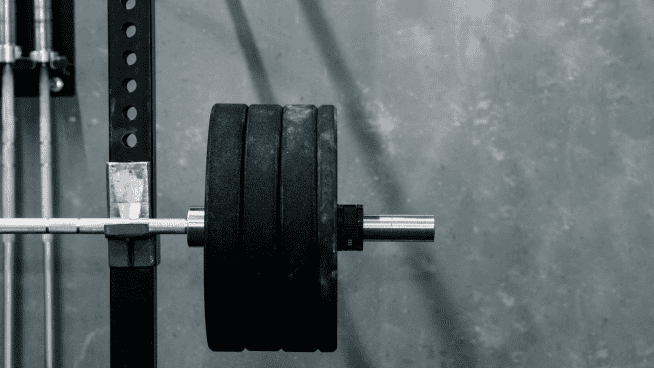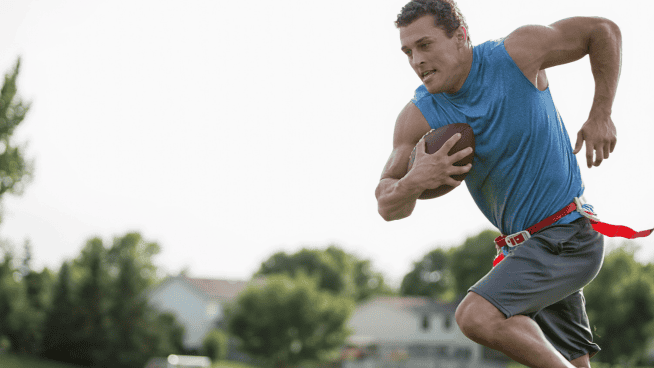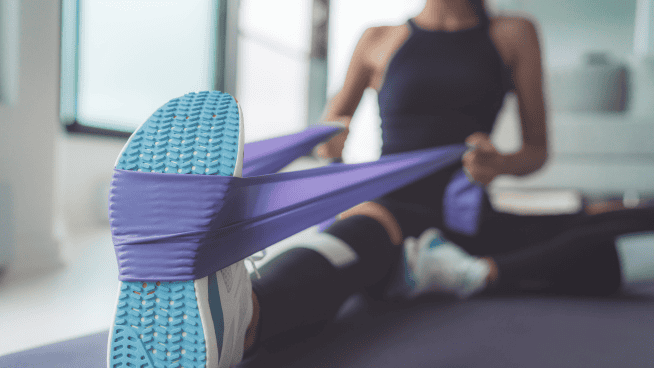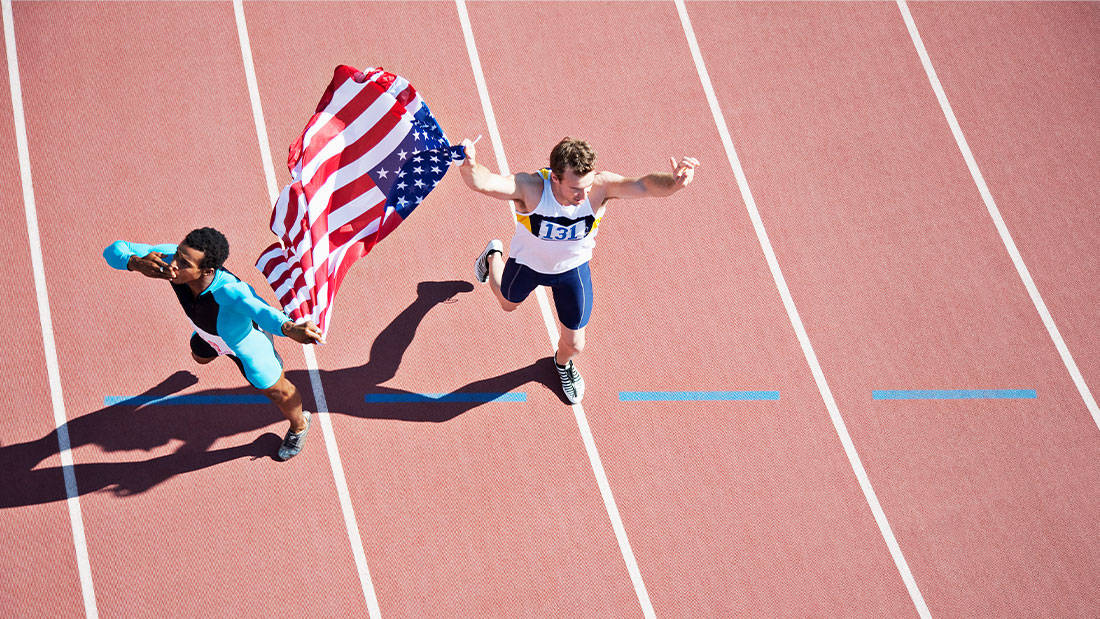Lower-Body Strength Training for Lacrosse
A typical lacrosse training program for lower-body strength includes familiar exercises like Cleans, Squats and Deadlifts. These exercises,which train multiple muscles in symmetrical, functional patterns, form the foundation of many strength training programs. But they fail to address the asymmetrical nature of lacrosse.
Asymmetrical lacrosse movements also require balance, stability, swiftness and control, as in:
- Face-off player planting left leg while stepping toward the ball
- Close defender quickly transitioning from one leg to the other while backpedaling into side run
- Attackman cutting off one leg during roll, split, bounce or rocker-step to gain top side
- Long-stick midfielder sprinting downfield in transition, exploding from one leg to the other
- Midfielder setting feet and exploding off back leg to shoot the ball
A good lacrosse strength training program includes both asymmetrical- and unilateral exercises, increasing performance and reducing injury risk.
Be careful not to let your knee drift inward when performing these exercises. That can cause you to put too much pressure on the knee and risk injury.
RELATED: The 4 Best Leg Exercises for Women
Lower-Body Lacrosse Exercises
Single Leg Box Squat
If asymmetrical training is new to you, this is the perfect exercise to start with. It takes a common exercise, the Box Squat, and challenges you in a unilateral position. I like to emphasize the eccentric—or lowering—portion of the exercise, and I tell my athletes to lower themselves on a four-second count. You can progress by lowering the box height or adding dumbbells, a barbell, chains or a weighted vest.
Skater Squat
The Skater Squat looks very similar to a Reverse Lunge, but the rear foot never touches the ground; only the back knee does so. We typically place an Airex pad behind the athlete and instruct him to make soft contact with the pad. If he is unable to show control and keep his knee outward during the exercise, we place bumper plates under the Airex pad to decrease the range of motion. For athletes who have no problem with the standard version, we typically load the movement with chains or a weighted vest.
One-Dumbbell, Single-Leg Deadlift
Though this exercise is called a Deadlift, it looks nothing like the traditional version. It would be more appropriately called a “Single-Leg Hip Hinge.”
Balance on one leg with your knee bent to about 20 degrees, then hinge at the hips and reach your opposite hand toward your shoe. It’s important to maintain a neutral spine. If you want to progress this exercise, use two dumbbells or incorporate a cable row at the top of the deadlift pattern.
Slideboard Lateral Lunge
This is one of my personal favorites as it trains a commonly neglected muscle group, the adductors, through their full eccentric and concentric range of motion. In this exercise, you perform a squatting pattern on one leg while extending the other leg to the side. It’s important to keep your support-side foot flat through the entire motion as the reaching leg moves out to the side. We usually use a slideboard for this exercise, but you can use ValSlides if you don’t have access to one.
Since these exercises supplement our symmetrical lifts, we typically program them in 2-3 sets of 8-15 reps and progress as needed. Pick two of the exercises and try them out on your next leg day!
Read more:
[cf]skyword_tracking_tag[/cf]RECOMMENDED FOR YOU
MOST POPULAR
Lower-Body Strength Training for Lacrosse
A typical lacrosse training program for lower-body strength includes familiar exercises like Cleans, Squats and Deadlifts. These exercises,which train multiple muscles in symmetrical, functional patterns, form the foundation of many strength training programs. But they fail to address the asymmetrical nature of lacrosse.
Asymmetrical lacrosse movements also require balance, stability, swiftness and control, as in:
- Face-off player planting left leg while stepping toward the ball
- Close defender quickly transitioning from one leg to the other while backpedaling into side run
- Attackman cutting off one leg during roll, split, bounce or rocker-step to gain top side
- Long-stick midfielder sprinting downfield in transition, exploding from one leg to the other
- Midfielder setting feet and exploding off back leg to shoot the ball
A good lacrosse strength training program includes both asymmetrical- and unilateral exercises, increasing performance and reducing injury risk.
Be careful not to let your knee drift inward when performing these exercises. That can cause you to put too much pressure on the knee and risk injury.
RELATED: The 4 Best Leg Exercises for Women
Lower-Body Lacrosse Exercises
Single Leg Box Squat
If asymmetrical training is new to you, this is the perfect exercise to start with. It takes a common exercise, the Box Squat, and challenges you in a unilateral position. I like to emphasize the eccentric—or lowering—portion of the exercise, and I tell my athletes to lower themselves on a four-second count. You can progress by lowering the box height or adding dumbbells, a barbell, chains or a weighted vest.
Skater Squat
The Skater Squat looks very similar to a Reverse Lunge, but the rear foot never touches the ground; only the back knee does so. We typically place an Airex pad behind the athlete and instruct him to make soft contact with the pad. If he is unable to show control and keep his knee outward during the exercise, we place bumper plates under the Airex pad to decrease the range of motion. For athletes who have no problem with the standard version, we typically load the movement with chains or a weighted vest.
One-Dumbbell, Single-Leg Deadlift
Though this exercise is called a Deadlift, it looks nothing like the traditional version. It would be more appropriately called a “Single-Leg Hip Hinge.”
Balance on one leg with your knee bent to about 20 degrees, then hinge at the hips and reach your opposite hand toward your shoe. It’s important to maintain a neutral spine. If you want to progress this exercise, use two dumbbells or incorporate a cable row at the top of the deadlift pattern.
Slideboard Lateral Lunge
This is one of my personal favorites as it trains a commonly neglected muscle group, the adductors, through their full eccentric and concentric range of motion. In this exercise, you perform a squatting pattern on one leg while extending the other leg to the side. It’s important to keep your support-side foot flat through the entire motion as the reaching leg moves out to the side. We usually use a slideboard for this exercise, but you can use ValSlides if you don’t have access to one.
Since these exercises supplement our symmetrical lifts, we typically program them in 2-3 sets of 8-15 reps and progress as needed. Pick two of the exercises and try them out on your next leg day!
Read more:
[cf]skyword_tracking_tag[/cf]










